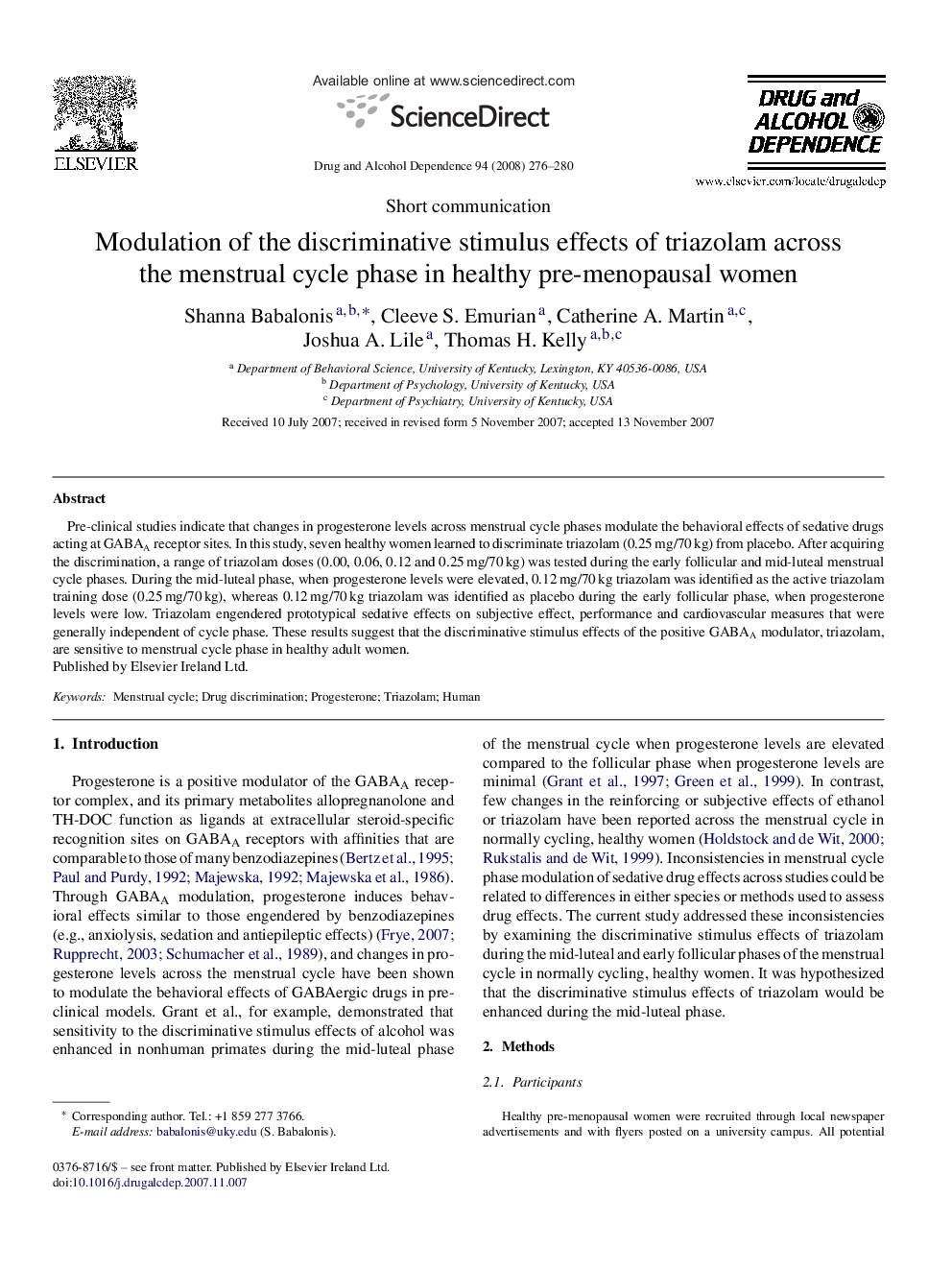| Article ID | Journal | Published Year | Pages | File Type |
|---|---|---|---|---|
| 1071156 | Drug and Alcohol Dependence | 2008 | 5 Pages |
Pre-clinical studies indicate that changes in progesterone levels across menstrual cycle phases modulate the behavioral effects of sedative drugs acting at GABAA receptor sites. In this study, seven healthy women learned to discriminate triazolam (0.25 mg/70 kg) from placebo. After acquiring the discrimination, a range of triazolam doses (0.00, 0.06, 0.12 and 0.25 mg/70 kg) was tested during the early follicular and mid-luteal menstrual cycle phases. During the mid-luteal phase, when progesterone levels were elevated, 0.12 mg/70 kg triazolam was identified as the active triazolam training dose (0.25 mg/70 kg), whereas 0.12 mg/70 kg triazolam was identified as placebo during the early follicular phase, when progesterone levels were low. Triazolam engendered prototypical sedative effects on subjective effect, performance and cardiovascular measures that were generally independent of cycle phase. These results suggest that the discriminative stimulus effects of the positive GABAA modulator, triazolam, are sensitive to menstrual cycle phase in healthy adult women.
